Which birds might I see today? Colourful Songsters
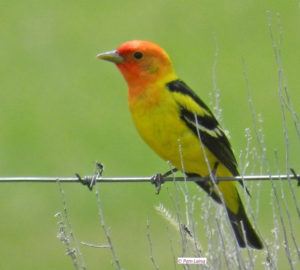
This time I’m going to introduce you to two of my favourite birds, the Western Tanager and the Lazuli Bunting. These are two of the most tropical-looking birds to be found annually in our valley and summer is a good time to see them. They have the added attraction of combining beauty with a lovely song.
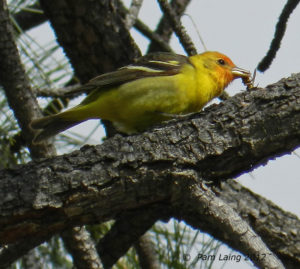
The colourful male Western Tanager has a reddish orange head topping a yellow body, one black and white and one yellow wingbar.
The female has no red head. Quite a bit smaller than a robin at 7.25”/~18 cm a tanager has a voice not unlike that of a robin too. The song is melodic, with shorter phrases than those of the robin’s song, and a somewhat husky quality. One description is that a tanager sings “like a robin with a sore throat”. The call note sounds like “Pretty, pretty”, an apt phrase indeed for such a beautiful bird.
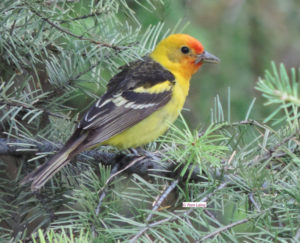
As the name implies Western Tanagers are found only in the western part of Canada and the continental US. Thankfully they are much more abundant than you might expect. Tanagers can be found in leafy city parks and gardens, and in mixed, conifer or deciduous forest. They can be surprisingly difficult to spot in spite of their vivid feathers, especially when they are feeding young and keeping a low profile.
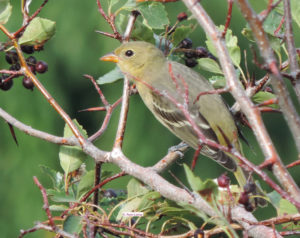
They glean insects from bark or leaves or as they fly by. They also eat small fruits, and have a particular fondness for grapes and wild berries such as hawthorn berries or saskatoons.
Even smaller than the Western Tanager at 5.5”/~14 cm Lazuli Bunting males are a rich electric blue on head and back, with a wash of salmon pink across the upper breast and clean white under parts.
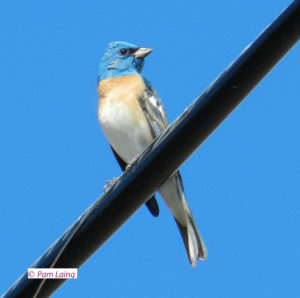
This bird too has wingbars of black and white. Females are softer in colour, with buffish grey plumage. The song is a high sharp warbling that is very musical and attractive.
Lazuli Buntings are only found in the western US and in the extreme southern portion of inland BC, AB and SK. Don’t expect to see them at the coast. It’s too wet for them there, and the habitat too deeply wooded. They like open grassy areas dotted with small shrubs; wild roses are a favourite place to nest.
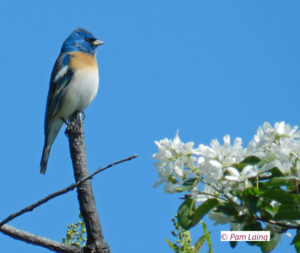
The grasslands of Beaver Lake Road are a very good place to try to find them. Listen for a trilling song and look on the rose and chokecherry bushes or, if you are lucky, on the wires overhead. The birds sit very upright to sing, throwing their heads back as they vocalize. Watch as they forage in the leaves or take unwary insects on the wing. Seeds are also a favourite food.
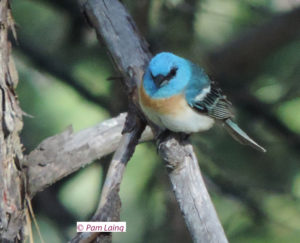
Make the most of these colourful beauties while they are here to breed during our long, warm summer days. By early September they’ll be on their way south again, to winter in the balmy Mexican or Central American climate. We are so lucky to have them with us, even if only for a short time each year!
Pam Laing, the Okanagan birder







0 Comments